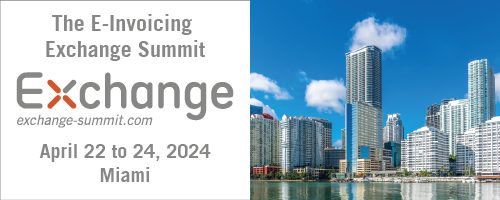A stand at an international trade fair, a visit to a customer abroad with overnight accommodation and dinner, the assignment of a fitter to a foreign customer – companies are often active internationally and pay VAT in countries in which they are not registered for VAT purposes. In many cases, this input tax is by no means lost, but can be reclaimed via the input tax refund procedure or reimbursement procedure. We provide an overview of what needs to be taken into account – and with our checklists for the refund procedure in the EU and Switzerland, you can ensure that you do not simply leave input tax unrecovered abroad.
EU procedures and deadlines
Swiss companies that have paid foreign VAT in the EU can, in principle, reclaim this VAT. The main requirements for this are set out in Directive 86/560/EEC. The prerequisite for a refund is in principle that the Swiss company:
- is registered as an entrepreneur (proof in the form of the entrepreneur certificate)
- has neither its registered office nor its management in an EU member state
- does not have a permanent establishment in an EU member state from which taxable transactions are carried out (otherwise a refund procedure remains possible in principle, but it is then governed by the provisions for companies established in the EU)
- has not carried out any transactions in the member state of refund, with the exception of
- supplies of goods and services for which the recipient of the services is liable to pay VAT, or
- transactions in the context of exempted transport services and services ancillary thereto
- intra-Community acquisitions and subsequent supplies within the framework of an intra-Community triangular transaction, or
- supplies subject to the VAT on eServices/ECOM regime.
- supplies covered by the distance sales scheme (Import-One-Stop-Shop).
Applications for VAT refunds must generally be submitted (depending on the country of refund) within 6 months of the end of the calendar year to which the refund period relates. In concrete terms, corresponding applications must therefore be submitted by June 30. If the deadline is missed, corresponding input taxes can no longer be reclaimed.
For third countries, the application procedure within the EU has not (yet) been harmonized; the specific procedure must be clarified in the respective member state for which an application is to be made. [1] In any case, applicants established in third countries must submit separate applications in all countries in which they wish to claim input tax.
Please note: Applications for input tax refund are regularly examined very critically – both with regard to formal aspects (e.g.: Has the form been properly and completely filled out and submitted within the deadline? Are the supporting documents enclosed in the required form and do they comply with the respective national regulations, keyword: VAT-compliant invoices?) as well as on material aspects (e.g.: Was VAT rightly charged? [2]).
Checklist Remuneration Procedure EU
→By the end of May at the latest, the responsible person in the company should check whether input tax credits have been accumulated to a significant extent in one or more member states in the previous year. An internally defined threshold helps to decide in which countries an application is worthwhile (e.g. EUR 1’000 invoiced VAT per country).
→If an application appears worthwhile, all invoices charged with VAT from the relevant member state should be collected in the original (even in the case of electronic applications, there is the possibility of a check with random samples). Attention in the case of electronically transmitted invoices. A printout is regularly not considered an original.
→In the ePortal, you can quickly and easily obtain the entrepreneur certificate required for the application online: https://eportal.admin.ch/start
→The authorities check remuneration applications very carefully! If it is foreseeable that higher input taxes are to be expected in a state, employees should be sensitized in advance and invoices should be critically checked for formal correctness when they are posted. Invoice corrections are often time-consuming – and the deadlines in the reimbursement process are absolute!
- A “Fact Sheet” with the most important information offers help.
- Internal directives on how to post foreign invoices simplify finding relevant documents without leading to excessive administrative effort (e.g. “Always start posting text with the country of invoice originator (e.g. Germany)”).
→The procedures, minimum application values and deadlines are very country-specific. It is often worthwhile (or even necessary) to get professional help for the reimbursement procedure. We are happy to support you with our network.
Procedures and deadlines for the United Kingdom
As a result of Brexit, the UK statutory regulations apply to the input tax refund procedure. The refund application for the United Kingdom must generally refer to a period of at least three months and can refer to a maximum period of 12 months.
Note: The refund period does not refer to the calendar year, but corresponds to the period from July 1 to June 30 of the following year. Accordingly, applications must be submitted to the UK tax authorities (HMRC) no later than December 31 of the current year.
If the application is for a period of less than 12 months, the total amount of VAT claimed must not be less than GBP 130. For 12 months, the minimum refund amount is only GBP 16.
Procedures and time limits in Switzerland
Companies domiciled abroad that incur expenses in Switzerland for their business activities can have the VAT paid on these expenses refunded as input tax. This applies if the following conditions in particular are cumulatively fulfilled:
- The company has its registered office abroad and can present a corresponding confirmation of entrepreneurial status from the relevant state
- The company is not registered in the Swiss VAT register
- The company does not provide taxable supplies in Switzerland
- The costs are incurred in connection with output supplies of the company that would be taxable in Switzerland
- The country in which the company is domiciled grants Switzerland the counter right
- The input tax to be refunded amounts to at least CHF 500 per calendar year and
- The VAT to be refunded was rightly charged by the provider.
A representative resident in Switzerland must be appointed to submit the application. The application must be made via the official FTA form and accompanied by the original receipts between January 1 and June 30 of the following year in which the costs were incurred. If this deadline is missed, the input tax can no longer be claimed.
Checklist Input VAT Refund Procedure Switzerland
→By the end of May at the latest, the responsible person in the company should check whether an input tax credit of at least CHF 500 was accumulated in Switzerland in the previous year.
→If an application appears worthwhile, all invoices from Switzerland charged with VAT should be collected in the original. Attention with electronically transmitted invoices. A printout is regularly not considered an original.
→The entrepreneur’s certificate or similar proof must be enclosed with the application.
→The FTA examines refund applications very carefully! If it is foreseeable that higher input taxes are to be expected in Switzerland, employees should be sensitized in advance and invoices should be critically checked for formal correctness when they are posted. Invoice corrections are often time-consuming – and the deadlines in the reimbursement procedure are absolute! A “Fact Sheet” with the most important information offers help.
→PrimeTax offers professional help for the remuneration procedure.
Conclusion: Compensation procedures are relatively complicated and lengthy. Primetax is happy to support you in carrying them out successfully.
1Some member states require the appointment of a representative in the country, others do not. In some member states, the application must be submitted in paper form together with original supporting documents, while others require an electronic application. In addition, special regulations of the relevant EU member state may have to be considered. For example, in Poland, Romania, the Czech Republic and Slovakia, applications can only be submitted in the respective national language, or in Hungary the business description according to the NACE code is not required.
[2]For example, with regard to exports and intra-Community deliveries in Germany, there has already been a change in practice in 2016, but it is still overlooked now and then. As early as 2016, the Federal Ministry of Finance published the administrative instruction according to which input tax shown separately in invoices for (basically tax-exempt) exports or intra-Community deliveries is not refunded if the conditions for tax exemption are met in principle. This also applies if the conditions for the tax exemption are objectively fulfilled, but the supplier has nevertheless charged the tax because, for example, he lacks the corresponding book and document evidence. In these cases, there would be an incorrect tax statement according to Art. 14c (1) UstG.Contribution by PrimeTax – for more information, please contact Linda Graff of PrimeTax















